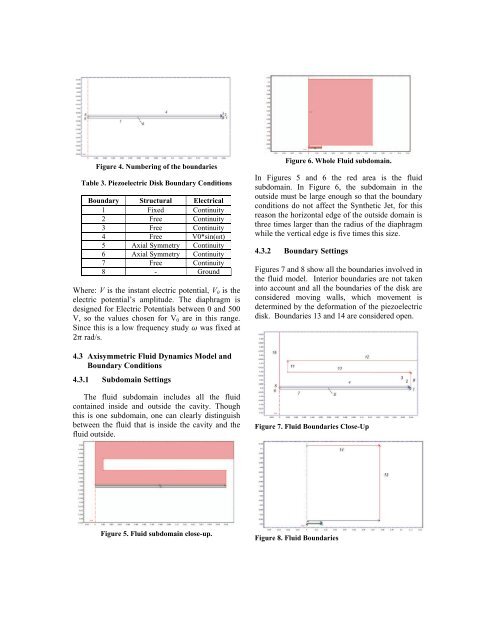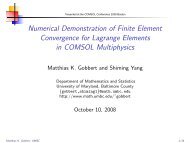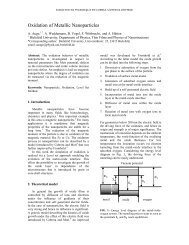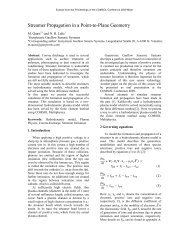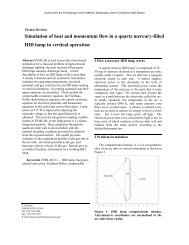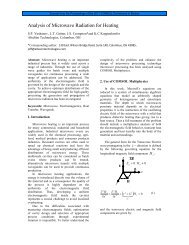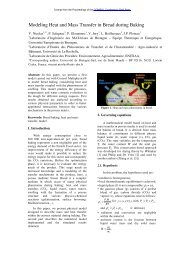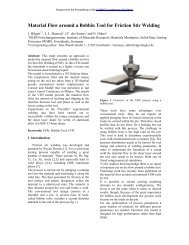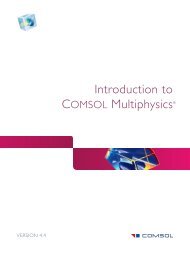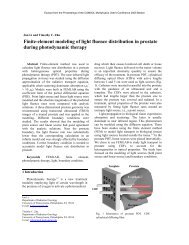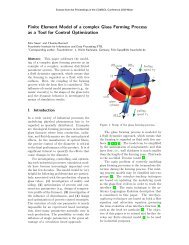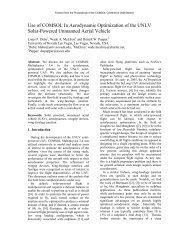Computational Modeling of Synthetic Jets - COMSOL.com
Computational Modeling of Synthetic Jets - COMSOL.com
Computational Modeling of Synthetic Jets - COMSOL.com
Create successful ePaper yourself
Turn your PDF publications into a flip-book with our unique Google optimized e-Paper software.
Figure 4. Numbering <strong>of</strong> the boundaries<br />
Table 3. Piezoelectric Disk Boundary Conditions<br />
Boundary Structural Electrical<br />
1 Fixed Continuity<br />
2 Free Continuity<br />
3 Free Continuity<br />
4 Free V0*sin(ωt)<br />
5 Axial Symmetry Continuity<br />
6 Axial Symmetry Continuity<br />
7 Free Continuity<br />
8 - Ground<br />
Where: V is the instant electric potential, V 0 is the<br />
electric potential’s amplitude. The diaphragm is<br />
designed for Electric Potentials between 0 and 500<br />
V, so the values chosen for V 0 are in this range.<br />
Since this is a low frequency study was fixed at<br />
2 rad/s.<br />
Figure 6. Whole Fluid subdomain.<br />
In Figures 5 and 6 the red area is the fluid<br />
subdomain. In Figure 6, the subdomain in the<br />
outside must be large enough so that the boundary<br />
conditions do not affect the <strong>Synthetic</strong> Jet, for this<br />
reason the horizontal edge <strong>of</strong> the outside domain is<br />
three times larger than the radius <strong>of</strong> the diaphragm<br />
while the vertical edge is five times this size.<br />
4.3.2 Boundary Settings<br />
Figures 7 and 8 show all the boundaries involved in<br />
the fluid model. Interior boundaries are not taken<br />
into account and all the boundaries <strong>of</strong> the disk are<br />
considered moving walls, which movement is<br />
determined by the deformation <strong>of</strong> the piezoelectric<br />
disk. Boundaries 13 and 14 are considered open.<br />
4.3 Axisymmetric Fluid Dynamics Model and<br />
Boundary Conditions<br />
4.3.1 Subdomain Settings<br />
The fluid subdomain includes all the fluid<br />
contained inside and outside the cavity. Though<br />
this is one subdomain, one can clearly distinguish<br />
between the fluid that is inside the cavity and the<br />
fluid outside.<br />
Figure 7. Fluid Boundaries Close-Up<br />
Figure 5. Fluid subdomain close-up.<br />
Figure 8. Fluid Boundaries


